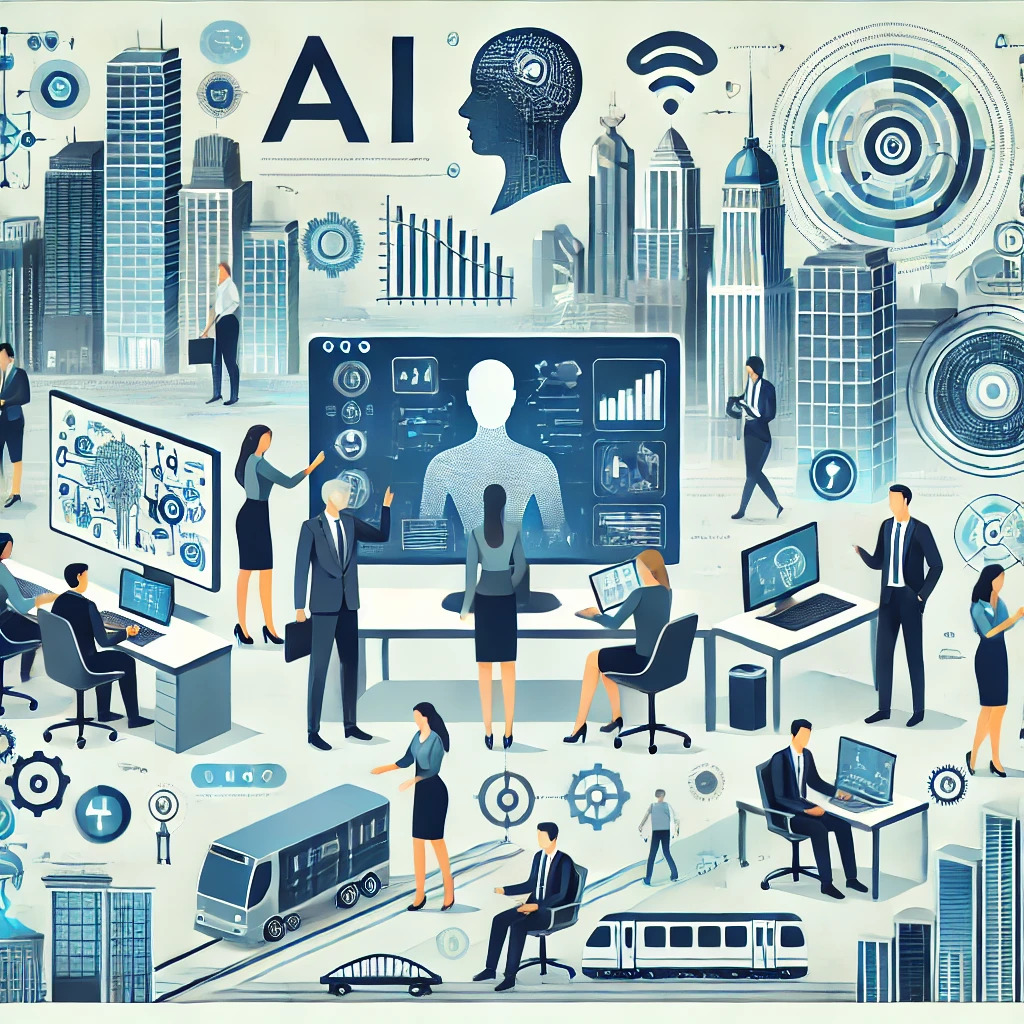Industry-wise, Artificial Intelligence (AI) is becoming a potent change agent, and the domain of public administration can no longer remain aloof to its significant impact. AI has the potential to enhance governmental roles in new ways, for example, streamlining decision-making capability, streamlining efficiency department by department, and making the way public services link citizens in new ways than ever before. This IT revolution brings new paths to governance and service delivery in the new world.
Defining AI in Government
AI in government is as simple as understanding its fundamental role: applying sophisticated algorithms, machine learning (ML), and natural language processing (NLP) to automate and enhance tasks traditionally performed by humans in government agencies. In public administration, this equates to developing intelligent systems capable of conducting valuable predictive analytics and facilitating critical data-driven decision-making, revolutionizing governmental operations at its core, believe it or not. The result is that governance should be made more efficient, transparent, and effective in proactively meeting citizens’ needs.
Applying AI Across Administration
The application of AI in public administration is rich and vast, changing the operational style of governments. Administrative tasks such as form processing and data entry are important areas that become automated, contributing remarkably towards reducing errors to a great extent, saving staff time, and enhancing overall productivity. The prime example would be AI-based chatbots that answer citizens’ queries in real time and around the clock. In addition, AI is transforming public services, making them more accessible to the public or making personalized recommendations and guidance, such as predicting needs in health organizations or optimizing the allocation of social welfare programs to those most vulnerable. AI is also heavily involved in predictive policy-making analysis, combing through large historical data sets to predict outcomes for better resource allocation or powering intricate economic projections. Cities usually use AI to streamline traffic control systems or predict future hotspots of crime. Finally, AI reinforces responsibility and accountability by sifting through vast amounts of data in search of irregularities or inconsistencies and detecting inefficiencies, corruption, or misappropriation of resources, for example, in sophisticated spending tracking systems or automating a part of the auditing process to achieve findings sooner.
AI for a Safer Society
AI will become an integral tool in pursuing a safer world through strengthening governments’ capabilities. In crime prevention and forecasting, AI solutions essentially help police officers forecast regions of criminal activity, identifying areas at high risk, and filtering out complex patterns of crime among units openly. AI-driven predictive policing is being increasingly applied in a bid to efficiently allocate limited police resources where they will be most required, and this is a huge plus for public safety. AI also plays a critical role in complementing disaster readiness and response. From natural disaster predictive analysis, such as hurricanes or floods, to best resource allocation upon emergencies, AI systems are the key to becoming the tool of choice to play a vital role. For instance, AI enables precise flood prediction and sophisticated evacuation planning to save human lives.
Smart Services for a Served Society
AI is also crucial to developing intelligent services for a served society to make the government more accessible and responsive. AI simplifies the relationship between citizens and public authorities by improving communication channels, making the services more convenient and accessible, which is hard to believe. A good instance is AI-powered virtual assistants that alert citizens to real-time information about government services, benefits, and programs without waiting a long time. Besides, AI is the most important smart city design and planning facilitator. AI operates on IoT data and AI to automate urban development planning, energy consumption, and traffic flow. Traffic control using AI is a clear use case, clearing congestion and enhancing the effectiveness of citizens’ and commuters’ transport.
Ethical Enigmas of Algorithms
Enabling AI in the public sector generates sharp ethical problems and dilemmas that must be resolved with extreme care. Fairness and bias are perhaps the most important concerns, a real ethical problem, since algorithms inevitably mirror and even enhance social biases, particularly if used in sensitive domains like hiring, policing decisions, or welfare distribution. Designing AI systems with an express intention of fairness and actively striving to offset discriminatory processes is the nature of fair regulations. The privacy of citizens and data protection are of supreme concern, demanding strong encryption and anonymization techniques in the handling of sensitive personal information. Transparency and accountability of AI systems are also demanded, necessitating open usage guidelines, regular audits, and independent monitoring to ensure ethical and legal compliance. Lastly, public acceptance and trust in AI-governance are ongoing processes resulting from frequent, responsible, and transparent use of the technology, promoting its advantages reasonably.
The Public Horizon of AI
The future of AI in public administration presents a vast public space for the promise of the technology. We see evolving roles of AI that include sophisticated facilitation of policy-making with sophisticated data analysis and the development of more autonomous public services delivered directly to the public. At the center of this will be a strong integration with new technologies like blockchain for security and IoT for pervasive data gathering, revolutionizing government operations bottom up. The long-term implications for governance are widespread, ranging from redefining democratic processes to affecting the public sector job market profoundly, believe it or not, change is around the corner.
Concluding the AI Conversation
In short, AI presents an eminently revolutionary public administration role, transforming service provision, driving predictive analytics, and enhancing citizen engagement, you understand. Policymakers and agencies must keep innovating and implementing AI, and above all else, confront ethical challenges squarely in earnest. Facilitating responsible innovation and actively creating public trust is key to unlocking effective AI-enabled governance in the future, frankly.
